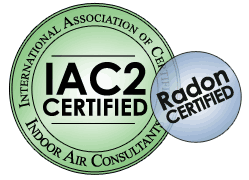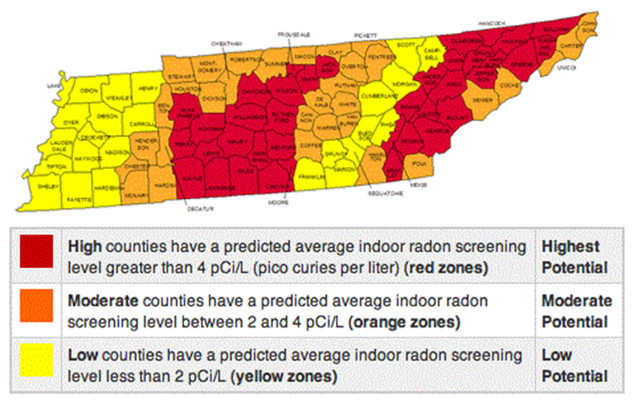
What is radon?
Radon is a naturally occurring radioactive gas that is tasteless, odorless, and colorless. It comes from the radioactive decay (breakdown) of radium, which comes from the radioactive decay of uranium, both of which are found in at least trace amounts in almost any kind of soil or rock.
Is radon really a health risk?
Yes, radon is a Class A carcinogen, which means it is known to cause cancer in humans. It is the second leading cause of lung cancer after smoking, and results in approximately 21,000 lung cancer deaths in the United States each year. Not everyone who breathes radon will develop lung cancer. Your risk is determined by such things as how much radon is in your home (and/or workplace, school, or other indoor environment); the amount of time you spend in your home (and/or workplace, school, or other indoor environment); and whether you smoke or have ever smoked. The longer you are exposed, and the higher the radon level, the greater the risk.
How does radon get into my home?
Radon enters homes through openings in the foundation floor or walls, wherever the foundation is in contact with the soil. Because it’s a gas, radon can travel through the soil, and it generally moves from an area of higher pressure to one of lower pressure. In most cases, the soil is at higher pressure than the house, and if radon is traveling along the foundation, it can be pushed into the lower pressure area through openings such as sump crocks, crawlspaces, space around plumbing or wiring, floor/wall joints, cracks, hollow block walls, or other entry points. Ultimately, tiny or large openings in the foundation floor or walls can act as entry points, and the pressure difference between the soil and the house acts as the driving force that allows radon to enter your home.
Radon testing
Any home can have a radon problem. This means new and old homes, well-sealed and drafty homes, and homes with or without basements. Testing is the only way to find out your home’s radon levels. EPA and the Surgeon General recommend testing all homes below the third floor for radon. Nearly one out of every 15 homes in the United States is estimated to have an elevated radon level (4 pCi/L or more).
The average indoor radon level is estimated to be about 1.3 pCi/L; roughly 0.4 pCi/L of radon is normally found in the outside air. A radon level below 4 pCi/L still poses a risk, but the EPA recommends that you take action to reduce your home’s indoor radon levels if your radon test result is 4 pCi/L or higher. Radon levels in many homes can be reduced to 2 pCi/L or less through proper remediation measures.
The radon testing that is performed by Cornerstone Inspections LLC in the Tri-Cities and surrounding areas of northeast Tennessee takes at least 48 hours to complete. A detailed report will be emailed to you upon completion of the test. This report will show the minimum, maximum, and average levels of radon, temperature, humidity, and pressure over the course of the testing period.
Source: https://www.tn.gov/health/cedep/environmental/healthy-homes/hh/radon.html

